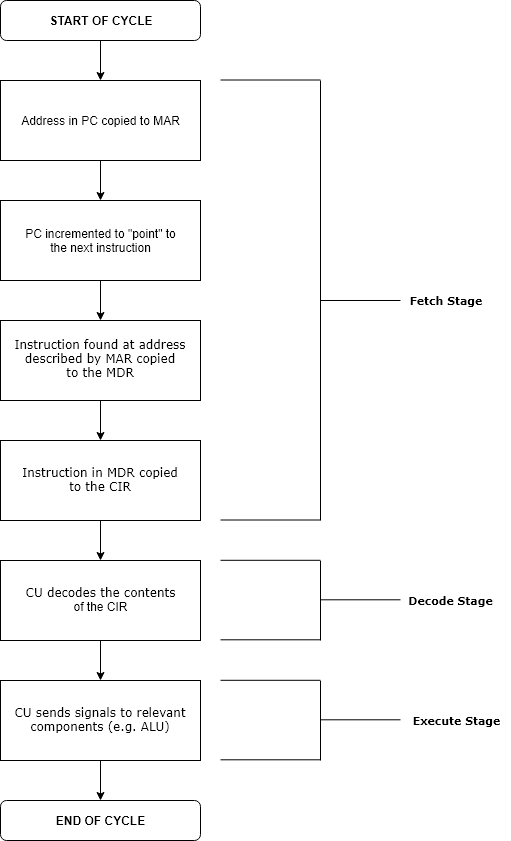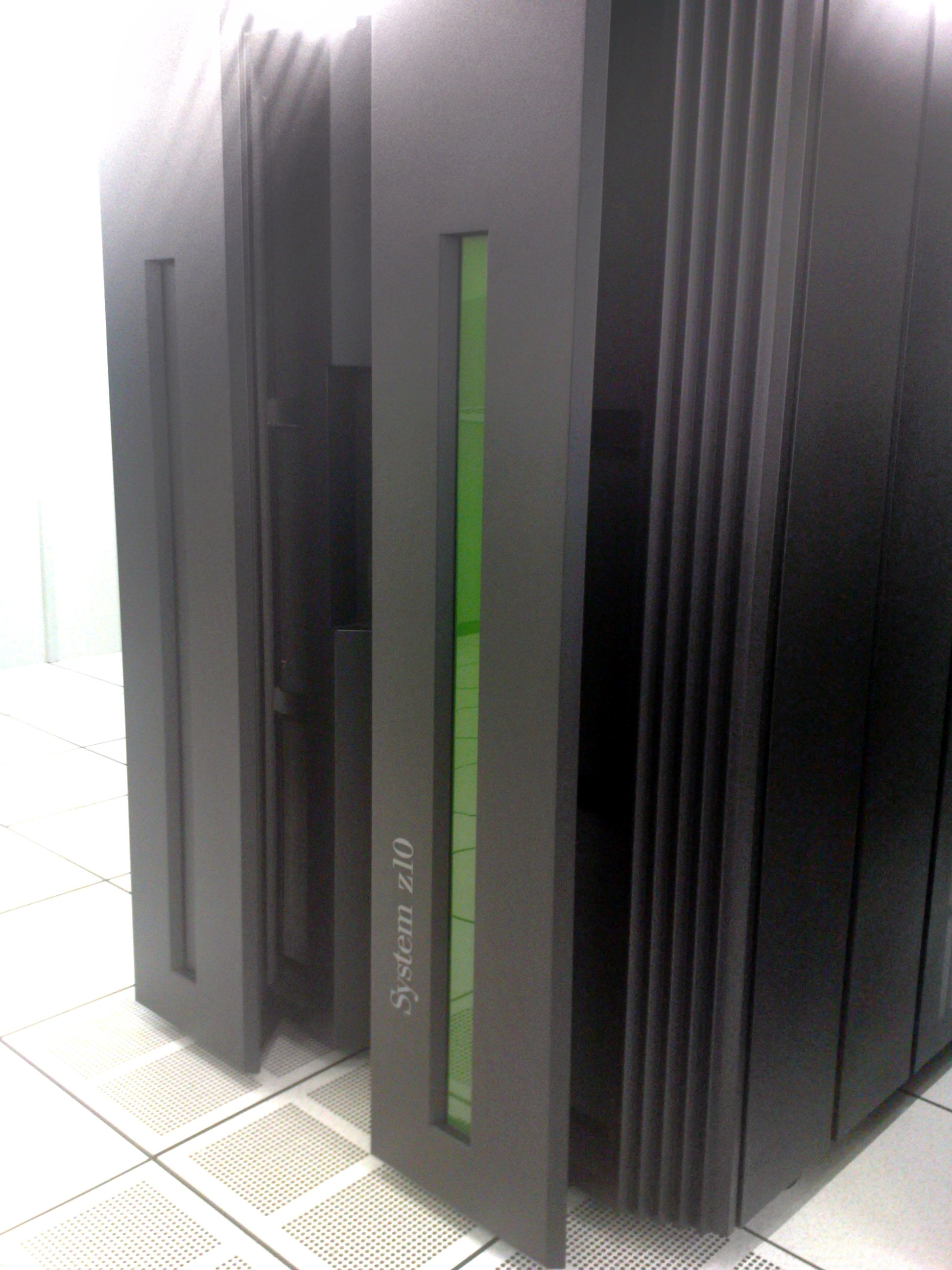|
Job Stream
In a non-interactive computer system, particularly IBM mainframes, a job stream, jobstream, or simply job is the sequence of job control language statements (JCL) and data (called ''instream data'') that comprise a single "unit of work for an operating system". The term ''job'' traditionally means a one-off piece of work, and is contrasted with a ''batch'' (executing the same steps over many inputs), but non-interactive computation has come to be called "batch processing", and thus a unit of batch processing is often called a ''job'', or by the oxymoronic term batch job; see ''job'' for details. Performing a job consists of executing one or more programs. Each program execution, called a ''job step'', ''jobstep'', or ''step'', is usually related in some way to the others in the job. Steps in a job are executed sequentially, possibly depending on the results of previous steps, particularly in batch processing. The term "job stream" is particularly associated with mainframes; in ... [...More Info...] [...Related Items...] OR: [Wikipedia] [Google] [Baidu] [Amazon] |
Non-interactive
Across the many fields concerned with interactivity, including information science, computer science, human-computer interaction, communication, and industrial design, there is little agreement over the meaning of the term "interactivity", but most definitions are related to interaction between users and computers and other machines through a user interface. Interactivity can however also refer to interaction between people. It nevertheless usually refers to interaction between people and computers – and sometimes to interaction between computers – through software, hardware, and networks. Multiple views on interactivity exist. In the "contingency view" of interactivity, there are three levels: #Not interactive, when a message is not related to previous messages. #Reactive, when a message is related only to one immediately previous message. #Interactive, when a message is related to a number of previous messages and to the relationship between them. One body of research h ... [...More Info...] [...Related Items...] OR: [Wikipedia] [Google] [Baidu] [Amazon] |
Mainframe
A mainframe computer, informally called a mainframe or big iron, is a computer used primarily by large organizations for critical applications like bulk data processing for tasks such as censuses, industry and consumer statistics, enterprise resource planning, and large-scale transaction processing. A mainframe computer is large but not as large as a supercomputer and has more processing power than some other classes of computers, such as minicomputers, servers, workstations, and personal computers. Most large-scale computer-system architectures were established in the 1960s, but they continue to evolve. Mainframe computers are often used as servers. The term ''mainframe'' was derived from the large cabinet, called a ''main frame'', that housed the central processing unit and main memory of early computers. Later, the term ''mainframe'' was used to distinguish high-end commercial computers from less powerful machines. Design Modern mainframe design is characterized less b ... [...More Info...] [...Related Items...] OR: [Wikipedia] [Google] [Baidu] [Amazon] |
Job (computing)
In computing, a job is a unit of work or unit of execution (that performs said work). A component of a job (as a unit of work) is called a ''task (computing), task'' or a ''step'' (if sequential, as in a job stream). As a unit of execution, a job may be concretely identified with a single process (computing), process, which may in turn have subprocesses (child processes; the process corresponding to the job being the parent process) which perform the tasks or steps that comprise the work of the job; or with a process group; or with an abstract reference to a process or process group, as in Unix job control. Jobs can be started interactively, such as from a command line, or scheduled for non-interactive execution by a job scheduler, and then controlled via automatic or manual job control (computing), job control. Jobs that have finite input can complete, successfully or unsuccessfully, or fail to complete and eventually be terminated. By contrast, online processing such as by serv ... [...More Info...] [...Related Items...] OR: [Wikipedia] [Google] [Baidu] [Amazon] |
Job Control Language
Job Control Language (JCL) is a scripting language used on IBM mainframe operating systems to instruct the system on how to run a batch processing, batch job or start a subsystem. The purpose of JCL is to say which programs to run, using which files or devices for input or output, and at times to also indicate under what conditions to skip a step. Parameters in the JCL can also provide accounting information for tracking the resources used by a job as well as which machine the job should run on. There are two distinct IBM Job Control Languages: * one for the operating system lineage that begins with DOS/360 and whose latest member is z/VSE; and * the other for the lineage from OS/360 to z/OS, the latter now including Job Entry Subsystem 2/3, JES extensions, #Job Entry Control Language, Job ''Entry'' Control Language (JECL). They share some basic syntax rules and a few basic concepts, but are otherwise very different. The VM (operating system), VM operating system does not have ... [...More Info...] [...Related Items...] OR: [Wikipedia] [Google] [Baidu] [Amazon] |
Batch Processing
Computerized batch processing is a method of running software programs called jobs in batches automatically. While users are required to submit the jobs, no other interaction by the user is required to process the batch. Batches may automatically be run at scheduled times as well as being run contingent on the availability of computer resources. History The term "batch processing" originates in the traditional classification of methods of production as job production (one-off production), batch production (production of a "batch" of multiple items at once, one stage at a time), and flow production (mass production, all stages in process at once). Early history Early computers were capable of running only one program at a time. Each user had sole control of the machine for a scheduled period of time. They would arrive at the computer with program and data, often on punched paper cards and magnetic or paper tape, and would load their program, run and debug it, and carry off thei ... [...More Info...] [...Related Items...] OR: [Wikipedia] [Google] [Baidu] [Amazon] |
Execution (computing)
Execution in computer and software engineering is the process by which a computer or virtual machine interprets and acts on the instructions of a computer program. Each instruction of a program is a description of a particular action which must be carried out, in order for a specific problem to be solved. Execution involves repeatedly following a " fetch–decode–execute" cycle for each instruction done by the control unit. As the executing machine follows the instructions, specific effects are produced in accordance with the semantics of those instructions. Programs for a computer may be executed in a batch process without human interaction or a user may type commands in an interactive session of an interpreter. In this case, the "commands" are simply program instructions, whose execution is chained together. The term run is used almost synonymously. A related meaning of both "to run" and "to execute" refers to the specific action of a user starting (or ''launching'' or ... [...More Info...] [...Related Items...] OR: [Wikipedia] [Google] [Baidu] [Amazon] |
Computer Program
A computer program is a sequence or set of instructions in a programming language for a computer to Execution (computing), execute. It is one component of software, which also includes software documentation, documentation and other intangible components. A ''computer program'' in its human-readable form is called source code. Source code needs another computer program to Execution (computing), execute because computers can only execute their native machine instructions. Therefore, source code may be Translator (computing), translated to machine instructions using a compiler written for the language. (Assembly language programs are translated using an Assembler (computing), assembler.) The resulting file is called an executable. Alternatively, source code may execute within an interpreter (computing), interpreter written for the language. If the executable is requested for execution, then the operating system Loader (computing), loads it into Random-access memory, memory and ... [...More Info...] [...Related Items...] OR: [Wikipedia] [Google] [Baidu] [Amazon] |
Z/OS
z/OS is a 64-bit operating system for IBM z/Architecture mainframes, introduced by IBM in October 2000. It derives from and is the successor to OS/390, which in turn was preceded by a string of MVS versions.Starting with the earliest: * OS/VS2 Release 2 through Release 3.8 * MVS/System Extensions (MVS/SE) * MVS/System Product (MVS/SP) Version 1 * MVS/System Product Version 2 (MVS/Extended Architecture, MVS/XA) * MVS/System Product Version 3 (MVS/Enterprise Systems Architecture, MVS/ESA) * MVS/ESA SP Version 4 * MVS/ESA SP Version 5 Like OS/390, z/OS combines a number of formerly separate, related products, some of which are still optional. z/OS has the attributes of modern operating systems but also retains much of the older functionality that originated in the 1960s and is still in regular use—z/OS is designed for backward compatibility. Major characteristics z/OS supportsSome, e.g., TSO/E, are bundled with z/OS, others, e.g., CICS, are separately priced. stable ... [...More Info...] [...Related Items...] OR: [Wikipedia] [Google] [Baidu] [Amazon] |
Computer File
A computer file is a System resource, resource for recording Data (computing), data on a Computer data storage, computer storage device, primarily identified by its filename. Just as words can be written on paper, so too can data be written to a computer file. Files can be shared with and transferred between computers and Mobile device, mobile devices via removable media, Computer networks, networks, or the Internet. Different File format, types of computer files are designed for different purposes. A file may be designed to store a written message, a document, a spreadsheet, an Digital image, image, a Digital video, video, a computer program, program, or any wide variety of other kinds of data. Certain files can store multiple data types at once. By using computer programs, a person can open, read, change, save, and close a computer file. Computer files may be reopened, modified, and file copying, copied an arbitrary number of times. Files are typically organized in a file syst ... [...More Info...] [...Related Items...] OR: [Wikipedia] [Google] [Baidu] [Amazon] |
Job Queue
In system software, a job queue ( batch queue, input queue), is a data structure maintained by job scheduler software containing jobs to run. Users submit their programs that they want executed, "jobs", to the queue for batch processing. The scheduler software maintains the queue as the pool of jobs available for it to run. Multiple batch queues might be used by the scheduler to differentiate types of jobs depending on parameters such as: * job priority * estimated execution time * resource requirements The use of a batch queue gives these benefits: * sharing of computer resources among many users * time-shifts job processing to when the computer is less busy * avoids idling the compute resources without minute-by-minute human supervision * allows around-the-clock high utilization of expensive computing resources Any process that comes to the CPU should wait in a queue. See also * Command pattern * Command queue * Job scheduler *Priority queue In computer science, ... [...More Info...] [...Related Items...] OR: [Wikipedia] [Google] [Baidu] [Amazon] |
Job Scheduler
A job scheduler is a computer application for controlling unattended background program execution of jobs. This is commonly called batch scheduling, as execution of non-interactive jobs is often called batch processing, though traditional ''job'' and ''batch'' are distinguished and contrasted; see that page for details. Other synonyms include batch system, distributed resource management system (DRMS), distributed resource manager (DRM), and, commonly today, workload automation (WLA). The data structure of jobs to run is known as the job queue. Modern job schedulers typically provide a graphical user interface and a single point of control for definition and monitoring of background executions in a distributed network of computers. Increasingly, job schedulers are required to orchestrate the integration of real-time business activities with traditional background IT processing across different operating system platforms and business application environments. ''Job scheduling'' ... [...More Info...] [...Related Items...] OR: [Wikipedia] [Google] [Baidu] [Amazon] |






